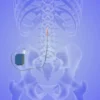Radiofrequency Ablation

Radiofrequency Ablation Services Offered in San Antonio, TX
Radiofrequency ablation alleviates pain caused by many conditions, but more importantly, it produces long-lasting results. At Advanced Spine and Pain Center, the team offers unmatched expertise in identifying the nerves that carry pain messages. Once identified, your provider performs a minimally invasive radiofrequency ablation procedure to block that nerve and the pain. To learn if this treatment is a good option for you, call one of the three offices in San Antonio, Texas, or book an appointment online today.
Radiofrequency Ablation Q&A
What is radiofrequency ablation?
Radiofrequency ablation uses controlled heat to wound a precisely targeted nerve. The wound blocks the nerve signals carrying pain messages to your brain. If your brain doesn’t perceive the pain, you won’t feel it.
Before performing a minimally invasive radiofrequency ablation, your provider does a diagnostic nerve block. They use a needle to place a local anesthetic on the nerve. If your pain improves, they know it’s the right nerve, and you’re a good candidate for the long-lasting pain relief provided by radiofrequency ablation.
When would I need radiofrequency ablation?
Your Advanced Spine and Pain Center provider may recommend radiofrequency ablation when conservative medical treatments fail to ease your pain. The procedure is so precise that it can treat nerves nearly anywhere in your body.
Radiofrequency ablation helps with conditions such as:
- Lower back pain
- Neck pain
- Facet joint arthritis
- Knee osteoarthritis
- Herniated discs
- Spinal stenosis
- Degenerative disc disease
- Sacroiliac joint dysfunction
- Hip pain
- Shoulder pain
Many people find that they can stop taking pain medications after having radiofrequency ablation.
What should I expect during radiofrequency ablation?
During radiofrequency ablation, most patients receive intravenous sedation and a local anesthetic at the injection site. Using fluoroscopy, an X-ray technique that provides real-time moving images, your provider guides a narrow, needle-like probe through your skin and to the targeted nerve.
After the needle is in place and touching the nerve, the probe sends out a short, controlled burst of radiofrequency energy. The heat quickly wounds the nerve, your provider removes the device, and your procedure is finished.
You can walk around after your procedure, but you stay in the office for a short time for observation. Your provider may recommend briefly limiting your activities to give the area time to heal, and many people have soreness at the treatment site for up to two weeks. But you should be back to work in 24-72 hours.
How long do radiofrequency ablation results last?
You may notice results immediately, but expect it to take about 10 days to experience optimal pain relief. Your results last six months to two years, depending on how long the nerve takes to heal and regrow.
Call Advanced Spine and Pain Center today or request an appointment online to learn if radiofrequency ablation is a good option for easing your pain.




